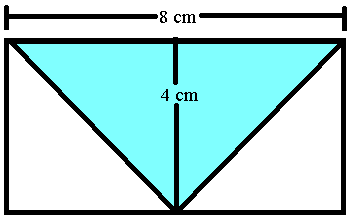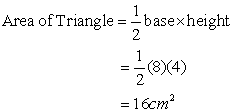Friday 5 April 2019
About NTS
April 05, 2019
Professional
NTS is an autonomous test taking organization in Pakistan. NTS conducts tests and assessments for admissions, scholarships and jobs in various colleges, universities and departments of Pakistan.
NTS TESTS CONTENT
Test content is different from the nature of job to job. Usually, it is consist of:
Test content is different from the nature of job to job. Usually, it is consist of:
- NTS Verbal Reasoning | Practice Questions
- NTS Quantitative Reasoning | Practice Questions
- NTS Analytical Reasoning
Besides, NTS Tests also contain Multiple Choice Questions (MCQs) from General Knowledge, Current Affairs, Pakistan Affairs, Everyday Science, Computer Science, Physics and others.
About NTS
Many government and private sector colleges and universities have made National Testing Services (NTS) test a pre-requisite for admissions and scholarships. And, many government and private sector departments have also made NTS test a pre-requisite for jobs in various departments.
Many government and private sector colleges and universities have made National Testing Services (NTS) test a pre-requisite for admissions and scholarships. And, many government and private sector departments have also made NTS test a pre-requisite for jobs in various departments.
National Testing Services (NTS) Pakistan was established in July 2002, and it is governed by a Management Committee (Board of Governance).
April 05, 2019
Professional
VERBAL REASONING: PRACTICE QUESTIONS
Page: 1 | 2 | 3
Choose the pair of words that best expresses a relationship similar to that expressed in the pairs of words in capital.
11. CONTINENT : WORLD
(A) teacher : classroom
(B) class : school
(C) cogent : powerful
(D) apple : fruit
(A) teacher : classroom
(B) class : school
(C) cogent : powerful
(D) apple : fruit
12. YAWN : BOREDOM
(A) walk : run
(B) apple : fruit
(C) smile : amusement
(D) tiger : carnivorous
(A) walk : run
(B) apple : fruit
(C) smile : amusement
(D) tiger : carnivorous
13. BAT : CRICKET
(A) hockey : stick
(B) football : soccer
(C) court : tennis
(D) rugby : sports
(A) hockey : stick
(B) football : soccer
(C) court : tennis
(D) rugby : sports
14. GAGGLE : GEESE
(A) class : school
(B) fish : pond
(C) tiger : jungle
(D) swarm : bees
(A) class : school
(B) fish : pond
(C) tiger : jungle
(D) swarm : bees
15. OBSERVE : SCRUTINIZE
(A) fond : doting
(B) running : eating
(C) point : location
(D) east : direction
(A) fond : doting
(B) running : eating
(C) point : location
(D) east : direction
ANSWERS: NTS VERBAL PRACTICE
11(B) 12(C) 13(B) 14(D) 15(A)
11(B) 12(C) 13(B) 14(D) 15(A)
EXPLANATION
11. (B) World is made up of continents, as school is made up of classes.
12. (C) Yawn is a sign of boredom, as smile is a sign of amusement.
is a sign of boredom, as smile is a sign of amusement.
13. (B) Bat is used to play cricket, as football is used to play soccer.
14. (D) Gaggle is a group of geese, as swarm is a group of bees.
15. (A) Scrutinize means to examine/look carefully. So, scrutinize is the higher degree of observe, as doting
means to examine/look carefully. So, scrutinize is the higher degree of observe, as doting  (an extreme love for sb/sth) is the higher degree of fond
(an extreme love for sb/sth) is the higher degree of fond  (love for sb/sth).
(love for sb/sth).
12. (C) Yawn
 is a sign of boredom, as smile is a sign of amusement.
is a sign of boredom, as smile is a sign of amusement.13. (B) Bat is used to play cricket, as football is used to play soccer.
14. (D) Gaggle is a group of geese, as swarm is a group of bees.
15. (A) Scrutinize
 means to examine/look carefully. So, scrutinize is the higher degree of observe, as doting
means to examine/look carefully. So, scrutinize is the higher degree of observe, as doting  (an extreme love for sb/sth) is the higher degree of fond
(an extreme love for sb/sth) is the higher degree of fond  (love for sb/sth).
(love for sb/sth).Page: 1 | 2 | 3
April 05, 2019
Professional
VERBAL REASONING: PRACTICE QUESTIONS
Page: 1 | 2 | 3
Choose from the following, the answer that is opposite in meaning to the main word (Written in Capital letters).
6. FOE
(A) friend
(B) enemy
(C) kind
(D) genuine
(A) friend
(B) enemy
(C) kind
(D) genuine
7. CHARLATAN
(A) fraud
(B) shrink
(C) genuine
(D) central
(A) fraud
(B) shrink
(C) genuine
(D) central
8. PERIPHERAL
(A) habit
(B) enemy
(C) kind
(D) central
(A) habit
(B) enemy
(C) kind
(D) central
9. DIFFIDENT
(A) shy
(B) confident
(C) deprived
(D) stupid
(A) shy
(B) confident
(C) deprived
(D) stupid
10. FOMENT
(A) greed
(B) silent
(C) quash
(D) uneasy
(A) greed
(B) silent
(C) quash
(D) uneasy
ANSWERS: VERBAL REASONING PRACTICE
6(A) 7(C) 8(D) 9(B) 10(C)
6(A) 7(C) 8(D) 9(B) 10(C)
EXPLANATION
6. (A) Foe  means enemy. Hence, friend is the opposite.
means enemy. Hence, friend is the opposite.
7. (C) Charlatan means fraud. Hence, genuine is the opposite.
means fraud. Hence, genuine is the opposite.
8. (D) Peripheral means something not central (for example, side-business). Hence, central (main) is the opposite.
means something not central (for example, side-business). Hence, central (main) is the opposite.
9. (B) Diffident means shyness (or shy). Hence, confident is the opposite.
means shyness (or shy). Hence, confident is the opposite.
10. (C) Foment means to incite. Hence, quash
means to incite. Hence, quash  (to suppress or to put down) is the opposite.
(to suppress or to put down) is the opposite.
 means enemy. Hence, friend is the opposite.
means enemy. Hence, friend is the opposite.7. (C) Charlatan
 means fraud. Hence, genuine is the opposite.
means fraud. Hence, genuine is the opposite.8. (D) Peripheral
 means something not central (for example, side-business). Hence, central (main) is the opposite.
means something not central (for example, side-business). Hence, central (main) is the opposite.9. (B) Diffident
 means shyness (or shy). Hence, confident is the opposite.
means shyness (or shy). Hence, confident is the opposite.10. (C) Foment
 means to incite. Hence, quash
means to incite. Hence, quash  (to suppress or to put down) is the opposite.
(to suppress or to put down) is the opposite.Page: 1 | 2 | 3
NTS Verbal Reasoning Practice
April 05, 2019
Professional
Verbal reasoning section practice questions with answers and explanation. NTS test preparation material for verbal section (English section). The English section of the NTS test consists of questions from Vocabulary (Synonyms, Antonyms, Analogies, Blanks), Grammar, and Reading Comprehension.
VERBAL REASONING: PRACTICE QUESTIONS
Page: 1 | 2 | 3
Choose from the following, the answer that is closest in meaning to the main word (Written in Capital letters). Fins answers and explanation to the answers at the bottom of the page.
1. INNATE
(A) right
(B) inborn
(C) inquire
(D) excessive
(A) right
(B) inborn
(C) inquire
(D) excessive
2. PROFANE
(A) desecrate
(B) restrain
(C) belief
(D) honest
(A) desecrate
(B) restrain
(C) belief
(D) honest
3. TENET
(A) foe
(B) stable
(C) improvement
(D) dogma
(A) foe
(B) stable
(C) improvement
(D) dogma
4. GREGARIOUS
(A) chary
(B) glorious
(C) glowing
(D) sociable
(A) chary
(B) glorious
(C) glowing
(D) sociable
5. ANTAGONIST
(A) opportunist
(B) proponent
(C) opponent
(D) eloquent
(A) opportunist
(B) proponent
(C) opponent
(D) eloquent
ANSWERS: NTS VERBAL REASONING PRACTICE
1(B) 2(A) 3(D) 4(D) 5(C)
1(B) 2(A) 3(D) 4(D) 5(C)
EXPLANATION
NTS Verbal Reasoning
April 05, 2019
Professional
The English (Verbal Reasoning) section of the NTS test consists of the following three type of questions:
- Vocabulary (Synonyms, Antonyms, Analogies, Blanks)
- Grammar, and
- Reading Comprehension
NTS VERBAL REASONING SECTION: SAMPLE QUESTIONS
Choose the word that is most nearly similar in meaning to the word in capital letters. (Find answers and explanation to the answers at the bottom of the page.)
Choose the word that is most nearly similar in meaning to the word in capital letters. (Find answers and explanation to the answers at the bottom of the page.)
1. INTEGRITY
(A) questioning
(B) transparency
(C) honesty
(D) sadness
(A) questioning
(B) transparency
(C) honesty
(D) sadness
2. PREROGATIVE
(A) interrogative
(B) right
(C) wise
(D) casual
(A) interrogative
(B) right
(C) wise
(D) casual
Choose the word that is most nearly opposite in meaning to the word in capital letters.
3. RESTIVE
(A) easy
(B) calm
(C) hurry
(D) restless
(A) easy
(B) calm
(C) hurry
(D) restless
4. PRODIGAL
(A) wasteful
(B) confident
(C) neutral
(D) frugal
(A) wasteful
(B) confident
(C) neutral
(D) frugal
Choose the pair of words that best expresses a relationship similar to that expressed in the pairs of words in capital.
5. TIGER : CARNIVOROUS
(A) lion : jungle
(B) cat : house
(C) cow : herbivorous
(D) wolf : clever
(A) lion : jungle
(B) cat : house
(C) cow : herbivorous
(D) wolf : clever
6. CONSTELLATION : STARS
(A) archipelago : islands
(B) city : country
(C) book : pen
(D) school : education
(A) archipelago : islands
(B) city : country
(C) book : pen
(D) school : education
Fill in the blanks with suitable choices.
7. We cannot predict whether he will go on a picnic or not. He is so __________ .
(A) deleterious
(B) offensive
(C) feckless
(D) capricious
(A) deleterious
(B) offensive
(C) feckless
(D) capricious
8. He is __________ fame and money. He pursues research just as an amateur scientist.
(A) indifferent to
(B) enamoured of
(C) running for
(D) struggling for
(A) indifferent to
(B) enamoured of
(C) running for
(D) struggling for
9. Octopuses have not only large brains __________ also a well-developed nervous system.
(A) but
(B) and
(C) are
(D) and have
(A) but
(B) and
(C) are
(D) and have
10. I hardly __________ meet him.
(A) ever
(B) never
(C) had ever
(D) had never
(A) ever
(B) never
(C) had ever
(D) had never
11. She wouldn’t ask you if she _________ not sure.
(A) was
(B) were
(C) has
(D) had
(A) was
(B) were
(C) has
(D) had
12. Don’t think there are no crocodiles because the water is calm. This is a
(A) Simple Sentence
(B) Compound sentence
(C) Complex sentence
(D) Mixed sentence
(A) Simple Sentence
(B) Compound sentence
(C) Complex sentence
(D) Mixed sentence
Read the following paragraphs carefully. Choose the correct answer from the options given below.
These huge waves wreak terrific damage when they crash on the shores of distant lands or continents. Under a perfectly sunny sky and from an apparently calm sea, a wall of water may break twenty or thirty feet high over beaches and waterfronts, crushing houses and drowning unsuspecting residents and bathers in its path. How are these waves formed? When a submarine earthquake occurs, it is likely to set up a tremendous amount of shock, disturbing the quite waters of the deep ocean.
These huge waves wreak terrific damage when they crash on the shores of distant lands or continents. Under a perfectly sunny sky and from an apparently calm sea, a wall of water may break twenty or thirty feet high over beaches and waterfronts, crushing houses and drowning unsuspecting residents and bathers in its path. How are these waves formed? When a submarine earthquake occurs, it is likely to set up a tremendous amount of shock, disturbing the quite waters of the deep ocean.
13. One surprising aspect of the waves discussed in the passage is the fact that they
(A) are formed in concentric patterns
(B) often strike during clear weather
(C) arise under conditions of cold temperature
(D) are produced by deep swells
(A) are formed in concentric patterns
(B) often strike during clear weather
(C) arise under conditions of cold temperature
(D) are produced by deep swells
14. It is believed that the waves are caused by
(A) seismic changes
(B) concentric time belts
(C) underwater earthquakes
(D) storms
(A) seismic changes
(B) concentric time belts
(C) underwater earthquakes
(D) storms
ANSWERS: NTS VERBAL REASONING
1(C) 2(B) 3(A) 4(D) 5(C) 6(A) 7(D)
8(A) 9(A) 10(A) 11(B) 12(B) 13(B) 14(C)
1(C) 2(B) 3(A) 4(D) 5(C) 6(A) 7(D)
8(A) 9(A) 10(A) 11(B) 12(B) 13(B) 14(C)
EXPLANATION
1. (C) Integrity  means honesty.
means honesty.
2. (B) Prerogative means right (or legal rights).
means right (or legal rights).
3. (A) Restive means restless or uneasy. So, easy is the antonym.
means restless or uneasy. So, easy is the antonym.
4. (D) Prodigal means wasteful (who spends too much). So, frugal
means wasteful (who spends too much). So, frugal  (economic or one who spends with care) is the antonym.
(economic or one who spends with care) is the antonym.
5. (C) Tiger is carnivorous (meat eating) animal. And, cow is herbivorous (grass eating) animal.
6. (A) Constellation is made up of stars. And, archipelago is made up of islands.
is made up of stars. And, archipelago is made up of islands.
7. (D) Cannot predict whether will go or not. So, he is unpredictable. Hence, capricious (unpredictable) is the best choice.
8. (A) Amateur (non-professional or unpaid worker) works without being paid. So, indifferent to
(non-professional or unpaid worker) works without being paid. So, indifferent to  (not interested) in fame and money is the best choice.
(not interested) in fame and money is the best choice.
9. (A) not only …. but also. This is a conjunction.
10. (A) We cannot use negative word, never, with ‘hardly’. So, ‘ever’ is the best choice.
11. (B) The verb, to be, will always appear as were in the present conditional.
12. (B) There are two clauses in the sentence. Hence, it is a compound sentence.
13. (B) Read this: Under a perfectly sunny sky and from an apparently calm sea, a wall of water may break.
14. (C) Read this: When a submarine earthquake occurs, it is likely to set up a tremendous amount of shock.
 means honesty.
means honesty.2. (B) Prerogative
 means right (or legal rights).
means right (or legal rights).3. (A) Restive
 means restless or uneasy. So, easy is the antonym.
means restless or uneasy. So, easy is the antonym.4. (D) Prodigal
 means wasteful (who spends too much). So, frugal
means wasteful (who spends too much). So, frugal  (economic or one who spends with care) is the antonym.
(economic or one who spends with care) is the antonym.5. (C) Tiger is carnivorous (meat eating) animal. And, cow is herbivorous (grass eating) animal.
6. (A) Constellation
 is made up of stars. And, archipelago is made up of islands.
is made up of stars. And, archipelago is made up of islands.7. (D) Cannot predict whether will go or not. So, he is unpredictable. Hence, capricious (unpredictable) is the best choice.
8. (A) Amateur
 (non-professional or unpaid worker) works without being paid. So, indifferent to
(non-professional or unpaid worker) works without being paid. So, indifferent to  (not interested) in fame and money is the best choice.
(not interested) in fame and money is the best choice.9. (A) not only …. but also. This is a conjunction.
10. (A) We cannot use negative word, never, with ‘hardly’. So, ‘ever’ is the best choice.
11. (B) The verb, to be, will always appear as were in the present conditional.
12. (B) There are two clauses in the sentence. Hence, it is a compound sentence.
13. (B) Read this: Under a perfectly sunny sky and from an apparently calm sea, a wall of water may break.
14. (C) Read this: When a submarine earthquake occurs, it is likely to set up a tremendous amount of shock.
⇒ More Practice Questions
April 05, 2019
Professional
QUANTITATIVE REASONING: PRACTICE QUESTIONS
Page: 1 | 2 | 3
Choose the correct answer from the given options. Find answers and solutions to the questions at the bottom of the page.
11. What are values of  and y in the following pair of equations
and y in the following pair of equations
 (A)
(A)  and
and 
(B) and
and 
(C) and
and 
(D) and
and 
(B)
(C)
(D)
12. What is the volume of the cylinder given below, where radius and height of the cylinder is given in centimeters
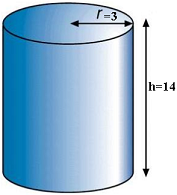 (A) 384 cm3
(A) 384 cm3
(B) 388 cm3
(C) 392 cm3
(D) 396 cm3
 (A) 384 cm3
(A) 384 cm3(B) 388 cm3
(C) 392 cm3
(D) 396 cm3
13. What is the geometric mean of the numbers: 2, 4 and 8?
(A) 3
(B) 4
(C) 5
(D) 6
(A) 3
(B) 4
(C) 5
(D) 6
14. What is the 71st term of the sequence: 4, 7, 10, 13, …. ?
(A) 214
(B) 216
(C) 218
(D) 220
(A) 214
(B) 216
(C) 218
(D) 220
15. What is the sum of the sequence: 5, 10, 15, …., 5000 ?
(A) 250,2200
(B) 250,2300
(C) 250,2400
(D) 250,2500
(A) 250,2200
(B) 250,2300
(C) 250,2400
(D) 250,2500
ANSWERS: NTS QUANTITATIVE PRACTICE
11(C) 12(D) 13(B) 14(A) 15(D)
11(C) 12(D) 13(B) 14(A) 15(D)
SOLUTIONS: NTS QUANTITATIVE PRACTICE
11. (C)
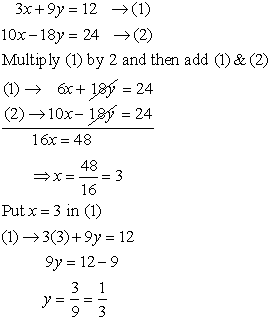

12. (D) The formula for calculating volume of a right-circular cylinder is  . Thus,
. Thus,


13. (B) By applying formula for calculating geometric mean, we have
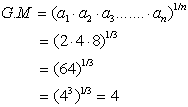

14. (A) This is an arithmetic sequence with common difference 3, and the first term is 4. By applying, formula for finding the nth term of an arithmetic sequence we have


April 05, 2019
Professional
QUANTITATIVE REASONING: PRACTICE QUESTIONS
Page: 1 | 2 | 3
Choose the correct answer from the given options. Find answers and solutions to the questions at the bottom of the page.
6. What is the value of  in the equation
in the equation
 (A) 1
(A) 1
(B) –2
(C) 2
(D) 3
(B) –2
(C) 2
(D) 3
7. How many feet there are in 4.5 meters? If 1 meter = 3.281 feet.
(A) 14.36
(B) 14.56
(C) 14.76
(D) 14.96
(A) 14.36
(B) 14.56
(C) 14.76
(D) 14.96
8. If person-A can complete a particular work in 10 days and person-B can completes that same work in 12 days. How much time it will take if they work together?
(A) 5 days and 11 hours
(B) 5 days and 16 hours
(C) 6 days and 11 hours
(D) 6 days and 16 hours
(A) 5 days and 11 hours
(B) 5 days and 16 hours
(C) 6 days and 11 hours
(D) 6 days and 16 hours
9. Consider the diagram below, where the length of the line AB is 6 cm. And, C is center of the circle
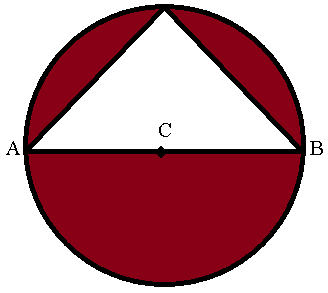 What is the area of the shaded region (region in maroon colour)?
What is the area of the shaded region (region in maroon colour)?
(A) 19.09 cm2
(B) 19.29 cm2
(C) 19.49 cm2
(D) 19.69 cm2
 What is the area of the shaded region (region in maroon colour)?
What is the area of the shaded region (region in maroon colour)?(A) 19.09 cm2
(B) 19.29 cm2
(C) 19.49 cm2
(D) 19.69 cm2
10. A student obtained the marks: 60, 50, 70, 65 and 85 in Physics, Chemistry, Statistics, English and Biology respectively, and 0 marks in Mathematics. What the average marks he obtained?
(A) 55
(B) 60
(C) 65
(D) 70
(A) 55
(B) 60
(C) 65
(D) 70
ANSWERS: QUANTITATIVE REASONING PRACTICE
6(D) 7(C) 8(A) 9(B) 10(A)
6(D) 7(C) 8(A) 9(B) 10(A)
SOLUTIONS: QUANTITATIVE REASONING PRACTICE
6. (D)
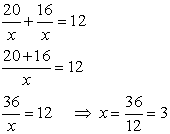

7. (C)
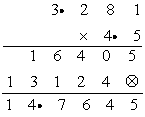 3.281 ⇒ three digits after decimal
3.281 ⇒ three digits after decimal
4.5 ⇒ one digit after decimal. Hence,
14.7645 ⇒ (3+1=4 digits after decimal)
 3.281 ⇒ three digits after decimal
3.281 ⇒ three digits after decimal4.5 ⇒ one digit after decimal. Hence,
14.7645 ⇒ (3+1=4 digits after decimal)
8. (A)
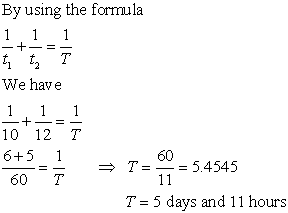

9. (B) The length of line AB which is the diameter of the circle is 6 cm. Hence, radius of the circle is 3 cm.
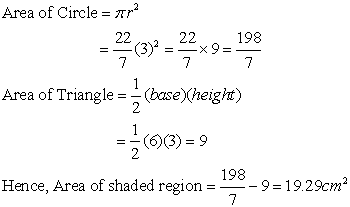

NTS Quantitative Reasoning Practice
April 05, 2019
Professional
Quantitative reasoning section practice questions with answers and solutions. NTS test preparation material for quantitative section. The quantitative section of the NTS test consists of questions from Arithmetic, Algebra, Geometry, Word Problems, Financial Mathematics, Basic Statistics and Probability.
QUANTITATIVE REASONING: PRACTICE QUESTIONS
Page: 1 | 2 | 3
Choose the correct answer from the given options. Find answers and solutions to the questions at the bottom of the page.
1. What is the solution of the equation
 (A) 1
(A) 1
(B)
(C)
(D) 4
(B)
(C)
(D) 4
2. If  , then what is the value of the function
, then what is the value of the function
 (A) 2
(A) 2
(B) 4
(C) 8
(D) 12
(B) 4
(C) 8
(D) 12
3. What comes next in the sequence: 2 3 7 23 ____?
(A) 77
(B) 83
(C) 87
(D) 93
(A) 77
(B) 83
(C) 87
(D) 93
4. What is area of the shaded region (coloured region) in the following diagram
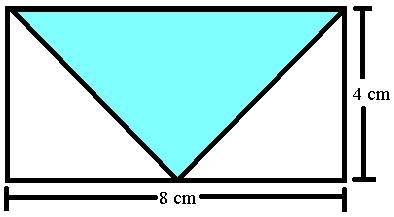 (A) 16 cm2
(A) 16 cm2
(B) 18 cm2
(C) 20 cm2
(D) 22 cm2
 (A) 16 cm2
(A) 16 cm2(B) 18 cm2
(C) 20 cm2
(D) 22 cm2
5. A car covered 300 km of distance in 3 hour 20 minutes, and then 240 km of distance in 2 hour and 40 minutes. What is the average speed of the car during this trip?
(A) 80 km/hr
(B) 90 km/hr
(C) 100 km/hr
(D) 110 km/hr
(A) 80 km/hr
(B) 90 km/hr
(C) 100 km/hr
(D) 110 km/hr
ANSWERS: NTS QUANTITATIVE PRACTICE
1(C) 2(D) 3(C) 4(A) 5(B)
1(C) 2(D) 3(C) 4(A) 5(B)
SOLUTIONS: NTS QUANTITATIVE PRACTICE
1. (C)
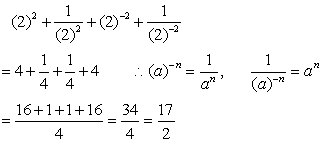
2. (D)


2. (D)





 means inborn (what you have when you were born).
means inborn (what you have when you were born). means to desecrate something holy.
means to desecrate something holy. means belief. Hence, dogma
means belief. Hence, dogma  means sociable.
means sociable. means opponent.
means opponent.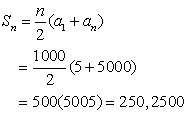 NOTE: There are 1000 terms from 5 to 5000, so n = 1000.
NOTE: There are 1000 terms from 5 to 5000, so n = 1000.
